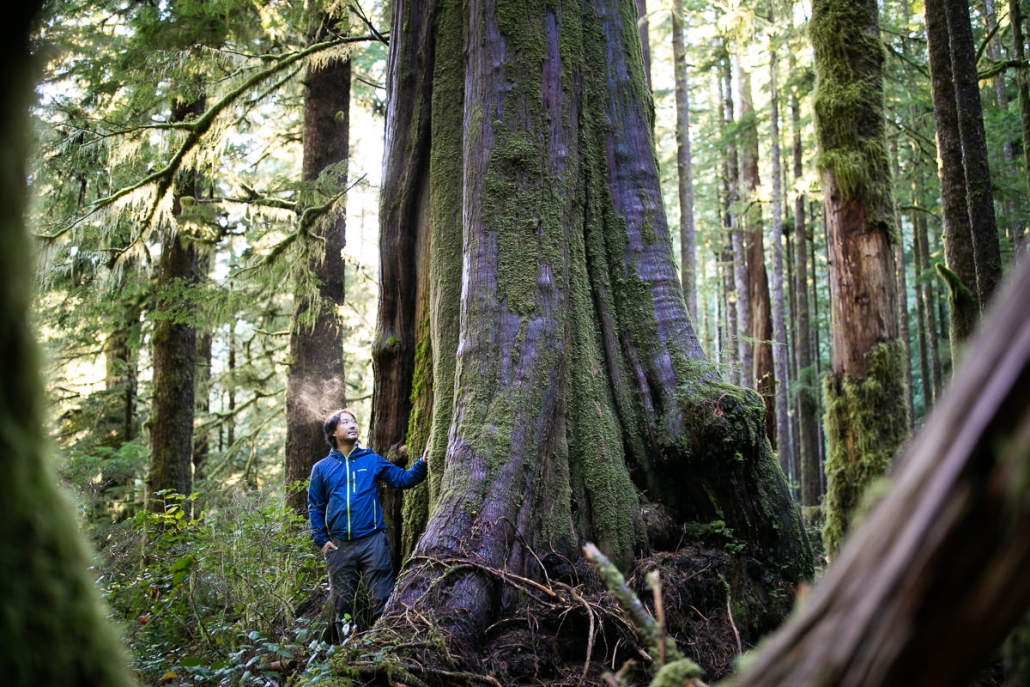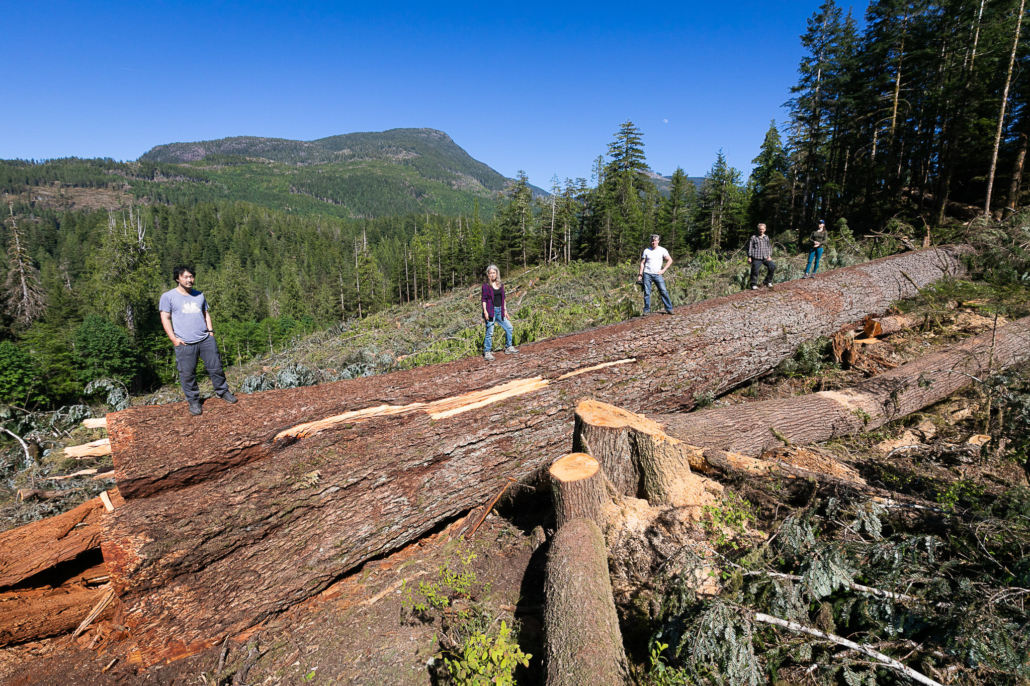 Dec 17 2024
Dec 17 2024Conservationists Welcome BC NDP and Green Governance Agreement
Conservationists Welcome BC NDP and Green Governance Agreement – BC Forestry Review Could Provide Key Opportunity to Strengthen Old-Growth Forest Protection Policies
The Endangered Ecosystems Alliance (EEA) and Ancient Forest Alliance (AFA) are welcoming the new 2024 Cooperation and Responsible Government Accord between the NDP and Green parties in BC. The cooperation agreement’s priorities include the protection of Fairy Creek and a comprehensive review of BC forests in partnership with First Nations and diverse sectors, offering a key opportunity to strengthen old-growth forest protection policies.
The cooperation agreement calls for the BC government to work towards achieving protection of the Fairy Creek Watershed in partnership with the Pacheedaht First Nation, whose unceded territory it is, and the Ditidaht First Nation, who has various legal arrangements that overlap in the area.
More importantly, the cooperation agreement between the BC NDP and Green parties outlines their intention to undertake a review of BC forests with First Nations and diverse sectors of society to address jobs, environmental protection and sustainability.
“Protection of Fairy Creek is important, but it should be noted that much of the valley is already within an Old-Growth Management Area – it’s mainly the adjacent, surrounding old-growth that is at-risk along with a part of the top headwaters, and most importantly the greater old-growth stands in the nearby San Juan, Upper Walbran, Gordon River, and Loss Creek Valleys, on Edinburgh Mountain, and in the Jurassic Grove area. Still, this agreement signals the BC government’s recognition that it must proactively seek the protection of an endangered old-growth forest instead of passively waiting for First Nations, who often lack capacity in their small communities, to approach them first. This is something that the BC government must do across the province to safeguard old-growth and endangered ecosystems with First Nations, including by developing a Protected Areas Strategy (PAS) like in the 1990s, implementing ecosystem-based protection targets that prioritize protection for the most endangered ecosystems, allocating deferral funding for First Nations, and closing logging loopholes in the conservation reserve system. The forestry review process in the cooperative governance agreement could provide the key opening to enable all of this to happen,” stated Ken Wu, Endangered Ecosystems Alliance executive director.
“The BC NDP government should be thanked for their commitment to protect 30% by 2030, securing over $1 billion in provincial-federal conservation financing to make it happen, deferring logging on 1.2 million hectares of the Technical Advisory Panel’s most at-risk old-growth, and starting the value-added, second-growth transition – but they still come up short on both conservation policies and sustainable job creation. A comprehensive and integrated overhaul of BC forestry and land use policies is sorely needed. If structured well, a BC forestry review process that involves the public and entails shared decision-making with First Nations can open the doors for this needed overhaul to protect endangered ecosystems and to bolster sustainable jobs and businesses across BC,” stated TJ Watt, Ancient Forest Alliance photographer and campaigner.

Endangered Ecosystems Alliance’s Executive Director Ken Wu beside a giant old-growth cedar tree in the unprotected Eden Grove near Port Renfrew in Pacheedaht territory.
Here are some of the policy gaps and key recommendations for old-growth protection and sustainable forestry jobs, as identified by the EEA and AFA:
1. Secure Remaining Old-Growth Deferrals in Most At-Risk Stands by Providing “Solutions Space” Funding
So far, only about half of the most at-risk old-growth stands with the biggest and oldest trees identified by the Technical Advisory Panel (TAP), about 1.2 million hectares, have been deferred from logging out of 2.6 million hectares, with another 1.2 million hectares of more marginal stands also deferred. The “War in the Woods” primarily hinges on the remaining 1.4 million hectares of undeferred most at-risk old-growth stands.
To secure these areas, deferral or “solutions space” funding for First Nations is needed for their lost forestry revenues in deferral areas – otherwise, it’s asking First Nations to go 2 years or more without what is often their largest revenue source. BC Nature Agreement funds are a potential source and can be applied going forward for new deferrals (i.e. the other 1.4 million hectares) and extensions of existing deferrals.
2. Develop the “GPS of Protection” – Ecosystem-Based Targets and a BC Protected Areas Strategy
In BC, protection is skewed towards alpine and marginal timber to minimize the impacts on the available timber supply (i.e. “save the small trees, log the big trees”). At the same time, the BC government has not created a proactive mandate to pursue protected areas – instead, the civil service is waiting on First Nations with IPCA proposals to approach them, despite the fact that many First Nations communities lack the capacity, the technical insights (in part due to a lack of proactive information flow from the BC government), and the economic ability without alternative financial support to protect the big-tree old-growth forests in their territories which many are dependent upon for forestry jobs and revenues.
If the BC government is serious about preventing a re-flare up of the War in the Woods, it must develop a mandate to proactively pursue the protection of the most endangered, least represented ecosystems, including the big-treed old-growth stands.
This mandate can be created via the development of “ecosystem-based targets” by a Chief Ecologist and independent Science/Traditional Ecological Knowledge committees housed under a BC Protected Areas Strategy. These initiatives can all arise from the forthcoming Biodiversity and Ecosystem Health (BEH) Framework. A science-based approach is needed that ensures protection targets for all ecosystems that are “fine filter” enough to include forest productivity distinctions (*this is critical) to distinguish between sites with small versus big trees. These ecosystem-based targets must not be limited to guiding the establishment of conservation reserves like OGMAs and WHAs under FRPA (as is currently in the works) but must also guide the establishment of parks and conservancies.
In addition, a provincial Protected Areas Strategy like that of the BC NDP government in the 1990s is vital to proactively identify candidate areas for potential protection based on ecosystem-based targets with plans and budgets, contingent on proactively engaging and undertaking shared decision-making with local First Nations, and that guides the expenditure of BC Nature Agreement conservation financing funds based on these objectives.
3. Close the logging loopholes in conservation reserves (e.g. OGMAs and WHAs)
Currently, Old Growth Management Areas can be moved and swapped for lower-value timber, while many Wildlife Habitat Areas still allow commercial logging within their boundaries (including in some spotted owl, northern goshawk and mountain caribou reserves and buffers). OGMAs should not be moveable for logging interests (wildfires and natural disturbances are different), and logging should not occur in the WHAs of sensitive old-growth species. Until then, these areas must not be included in BC’s accounting towards its 30% by 2030 goal (i.e. BC has not protected 19.5% but rather 15 to 16%).
4. Build a Modernized, Smart Forest Industry and a BC Conservation Economy Strategy
The BC government should expand a major second-growth, value-added “smart forest industry” incentive program, where log export “fees in lieu” rebates, PST relief, and provincial property tax relief can be used as incentives to greatly scale up the transition to smaller diameter, value-added, second-growth engineered wood products. Log export restrictions should also be undertaken, along with a concerted effort to facilitate eco-forestry practices to create higher-value logs (longer rotations, removing lower limbs to create higher-value saw logs) and commercial thinning.
A BC Conservation Economy Strategy is also needed, particularly in regions where the major expansion of protected areas is occurring. Provincially-supported business development hubs can provide rebates, loans and various financial incentives; in-kind business development support; facilitation of labour services, including supporting staff housing and accommodation (e.g. supporting rental zoning bylaw adjustments); and other strategies to spur tourism, recreation, real estate, high-tech, non-timber forest products, carbon-offset and clean tech development. Such a strategy can make BC a powerhouse to fuel a sustainable economic resurgence in BC combined with the protection of old-growth and endangered ecosystems.

Ancient Forest Alliance campaigner & photographer TJ Watt stands beside an ancient western redcedar approximately 9 feet (3 meters) wide before and after it was cut down by BC Timber Sales in the Nahmint Valley near Port Alberni in Hupačasath, Tseshaht, and Yuułuʔiłʔatḥ First Nations territory.






